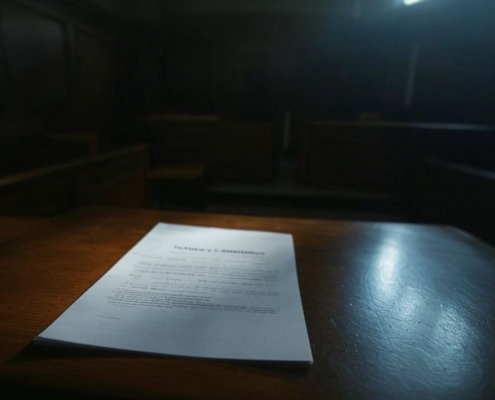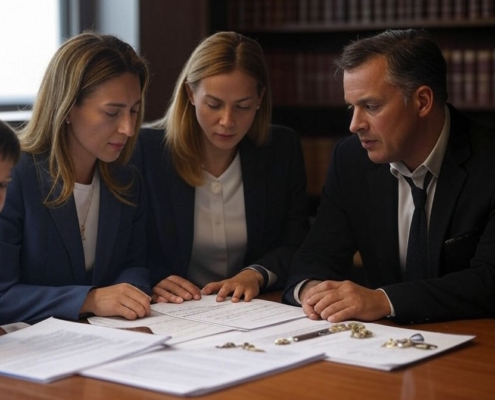Introduction
Legal accountability for a tort carried out by another individual or organization is known as “vicarious liability.” “The buck stops here,” to put it simply, is a legal notion. According to Section 2338 of the California Civil Code:
A principal is liable to third parties for the carelessness of his representative in the conduct of the agency’s work, including wrongdoings committed by the representative in and as part of the deal of the company, and for his deliberate failure to fulfill the principal’s commitments, unless he is mandated by law or has the authority to do so.
An illustration of a dog bite case in which the requirements for vicarious liability in California were not fulfilled
The court held in Baker vs. Kinsey that if it appears that the bridge owner didn’t harbor or keep the dog in person, did not authorize or require the toll-keeper to retain the dog, and was unaware that the dog was being utilized in the protection or conduct of the business in which the dog owner was employed, then an action to seek damages resulting from the bite of an aggressive dog being related to the toll-keeper cannot be brought against the bridge owner.
Examples of Vicarious liability in California that did not include dog bites
Several other cases further illustrate how Vicarious Liability in California works.
The deed of an agent to whom a mortgage and executed note were left for delivery was under consideration by the Supreme Court in Walsh vs. Hunt. The agent changed the numbers that showed the principal amount and interest rate. According to the court, the agent was only a delivery bailee.
It was ruled in Rahmel vs. Lehndorff that an innkeeper was not responsible for a waiter’s battery and assault on one of his customers in a dining room. In Ruppe vs. City of Los Angeles, the Supreme Court states that the statement in the second sentence, which is taken from Rahmel vs. Lehndorff, that “the wrongful act has to be one which the servant has the authority under certain conditions to do,” is noteworthy.
The statement is definitely too limited if it is interpreted to imply that the action must be something that the servant is permitted to perform under specific conditions. The court provides a straightforward example before stating: “In simple terms, the master has given authority to the servant in a way that he is trusting him with the accomplishment of a duty in which it would be possible for him to violate the law, even though he didn’t give permission to him to do so.”
The primary issue in Riordan vs. Gas Consumers’ Association is whether the servant had left his job at the time of the claimed act of carelessness, or if he had left or disregarded a responsibility in the course of his job. The principal is liable for the servant’s actions in the second scenario, but not in the first.
A lawsuit for damages related to railroad construction was filed in Hopkins vs. Western Pacific Railroad. “A railroad business is not accountable for the activities of its employees in creating an obstruction by digging a culvert beneath its train near the plaintiff’s home for its intended use of a privy,” reads the decision’s syllabus.
In the matter of Stephenson vs. Southern Pacific Co., an engineer intentionally scared off people in a city car by backing his engine toward it as it crossed the railroad track. A terrified traveler, thinking she was in danger, sprang from her car and suffered injuries. The court decided that the engineer’s action was not within the parameters of his job.
Copelin vs. Berlin Dye Works Etc. Co. included a case in which jewelry had been left in a suit of clothing that was handed to the defendant’s wagon driver so that the clothing might be cleaned. The gems vanished. The cleaning firm was found not to be accountable for the jewelry theft because it was not a voluntary or involuntary bailee. The court determined that the theft was outside the purview of the cleaning company’s work because it had neither assumed nor assigned any responsibility for the jewelry’s safekeeping to its employees.
Methods to prove vicarious liability
To establish Vicarious Liability in California, courts evaluate relationships and the scope of work.
1. The Principal and the Agent
There are three ways in which a principal can be held accountable for the wrongdoing of its agent, despite the fact that wrongdoing is criminal: (1) when the principal promptly permits the crime or tort to be carried out; (2) when the agent engages in the wrongdoing while acting as the representative of the principal, whether or not the principal approves of the wrongdoing, even if it is criminal; or (3) when the principal approves of the agent’s actions as its own (Doe vs. Roman Catholic Archbishop of Los Angeles).
2. Employer and Private Employee
Simply put, the respondeat superior rule holds that a company is vicariously accountable for any torts committed by its employees while they are on the job. Even if the employer did not grant the employee permission to commit crimes or deliberate torts, the employee’s malicious, willful, and criminal torts may be considered to be within the purview of respondeat superior (Lisa M. vs. Henry Mayo Newhall Memorial Hospital).
3. Governmental Organizations and Public Workers
“A public employee bears the same liability as a private individual for harm resulting from his act or omission, unless specifically specified by law (which includes Section 820.2).” In accordance with Section 820.2, “Unless otherwise specified by law, an employee of the government is not liable for harm resulting from his conduct or inaction when the omission or act was a consequence of his use of the discretion conferred in him, regardless of whether that power happened to be misused.”
“If, in addition to this part, the omission or act would have given birth to a cause for action against the worker or his personal agent, the public entity is responsible for any injury roughly caused by a mistake on the part of a worker of the public organization within the extent of his employment.”
“A public servant is not responsible for an injury originating from his omission or act unless stipulated otherwise by statute, provided that the omission or act was a consequence of his use of the discretion conferred in him, regardless of whether such discretion was misused.”
4. The Doctrine of Peculiar Risk
When an independent contractor does work that is inherently risky and the contractor’s negligence results in injuries to other people, the employer may be held accountable for tort damages. The doctrine aims to guarantee that injuries resulting from work that is naturally hazardous will be compensated, that the person for the benefit of whom the contracted job is done carries responsibility for any dangers of injury to others, and that sufficient precautions are taken to avoid such injuries. It does this by placing such liability with no fault on the individual who recruits the independent contractor.
5. Ostensible Agency
Ratification is when someone voluntarily chooses to accept as his own, in some way, an act that was allegedly performed on their behalf by another person. For some or all people, this means that the act is treated as though it were first approved by them.
6. Partnerships
According to conventional legal theories, the partnership is viewed as a collection of people, with each partner serving as an agent for every other partner in business dealings and the partnership’s agents serving as agents for every partner. When one partner engages in behavior or commits a tort that causes harm to a third person, the other partners are held accountable both severally and jointly.
7. Joint Venture
A joint venture must have three fundamental components: each member must have a stake in the business; the members should share the venture’s profits; and they must have shared control over the business, even if they may assign it. When a joint venture is formed, the parties involved are held vicariously accountable for each other’s wrongdoings while the endeavor is being carried out.
8. Nondelegable Duty
Statutes, contracts, & common law decisions are the sources of nondelegable duties. They are not based on the employer’s own carelessness. These are vicarious liability regulations, which hold the employer accountable for the independent contractor’s carelessness regardless of whether the company was at fault.
9. Conspiracy
Although it is a legal notion, conspiracy imposes accountability on those who share an agreed-upon strategy or design in the commission of a tort with the proximate tortfeasors, even if they are not the actual perpetrators of the tort. A coconspirator who participates in a civil conspiracy essentially takes on the torts committed by other coconspirators who are involved in the conspiracy. A coconspirator so bears tort culpability on an equal footing with the direct tortfeasors.
10. Alter-Ego Doctrine
The phrase “alter ego” refers to a theory that, when applied, either treats a corporation’s responsibilities as those of its fair owners (Minton vs. Cavaveny) or treats the equitable owners’ obligations as those of the business itself (Wenban Estate, Inc. vs. Hewlett).
The analysis of the legal principles, court precedent, and the particular application proves that Vicarious Liability in California is a complex doctrine that is continuing to change. Every person doing business, getting employed, or making a claim should thus know what its implications are.






























